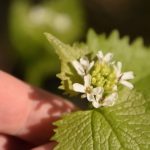White Snakeroot is a plant that is native to North America. It is found in woodlands, meadows, and along roadsides. It can grow up to four feet tall and has white flowers that bloom from late summer to early fall. The plant has lance-shaped leaves with teeth along its margins and the leaves come from petioles. The stem of the plant is slightly hairy and has little hairs running its length.
White Snakeroot is often confused with Boneset, another native North American plant. Both plants have white flowers that bloom in late summer to early fall, but the similarities end there. White Snakeroot has lance-shaped leaves with teeth along its margins and the leaves come from petioles. Boneset leaves are perfoliate, meaning the stem goes through the leaves. The leaves of Boneset are very long and lance shaped and the teeth along the margins aren’t near as distinct. The stem of White Snakeroot is slightly hairy and has little hairs running its length, whereas Boneset is very hairy on its stem.
White Snakeroot contains a toxin called Tremetol which is responsible for Milk Sickness in grazing livestock. This can be passed on to humans who drink the milk, but it can also be dangerous if consumed. Symptoms of Milk Sickness include nausea, vomiting, diarrhea, weakness, and confusion. If left untreated, it can be fatal. Therefore, it is important to be able to identify White Snakeroot and avoid consuming it.
In conclusion, White Snakeroot is a plant that should be avoided due to its toxic effects. It looks similar to Boneset but there are distinct differences between the two plants. It is important to be able to identify White Snakeroot so that it can be avoided and Milk Sickness can be prevented.



GIPHY App Key not set. Please check settings